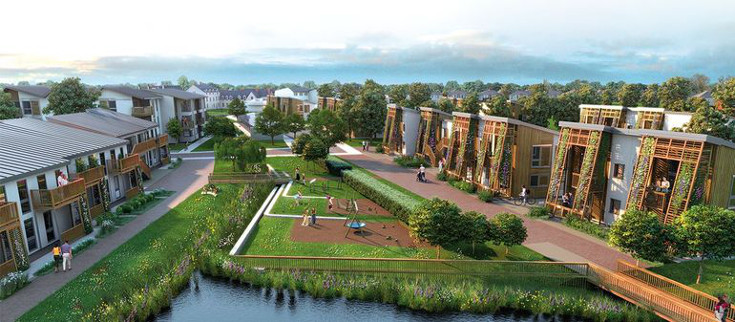Smart” Villages Incorporate High-Tech and Sustainable Agriculture
“Smart” Villages Incorporate High-Tech and Sustainable Agriculture
“Smart” Villages Incorporate High-Tech and Sustainable Agriculture
This is the way all communities should go
After seeing this news, I decided this is the type of town I want to live in!
After seeing this news, I decided this is the type of town I want to live in! You may feel the same, too. The UN Sustainable Development Solutions Network has pioneered a new footprint for eco-villages that makes housing more affordable, and organic food more accessible for people in Malaysia.
Utilizing high-tech construction to create ecological ‘smart-villages,’ many rural families can expect to increase their monthly income 3-fold while living in an integrated, sustainable farm system that includes a communal farming operation of aquaponics, grain-fields watered from the fish tanks with ‘high-cost’ plants, trees, and special technology in ‘autopots’ that reduce the need for pesticides and fertilizers.
The land also includes 1000-square foot homes that are easy and inexpensive to buildas well as compost sites and chicken coops that feed off the compost worms. The villages are also run on bio-mass and solar energy so they are almost entirely self-sufficient, reduce waste, and optimize nutrient absorption for plants on land that was previously considered non-arable.
As if all this sustainability wasn’t enough – the villages don’t go without modern creature comforts, such as 4G Internet service for ‘e-learning,’ playgrounds, and a community centers for meetings.
New planned communities like these are popping up all over the world in response to our global need to live differently and more sustainably.
Vancouver, Canada plans to be a totally green city by 2020 with strict green building codes and the use of more electric vehicles. In Oslo, Norway, the land is almost two-thirds covered with protected forests, waterways, and sustainable farmland. Copenhagen, Denmark has over 43 miles of bike lanes to cut down car traffic and emissions, and off-shore wind farm is in planning stages.As Jefferey Jaxen wrote for Natural Society in a piece outlining how important it is for our collective future for:
“The answer for many of society’s problems can be found by walking in the opposite direction of the current push for further centralization being sold in many aspects of our life. Indeed, it is because of the centralization of the food system that we are now vulnerable to supply chain disruptions that can come from a variety of sources, instantly crippling unprepared communities.
In addition, a centralized food supply allows large corporations to monopolize the food sources while diminishing our rights and lessening the quality. As this has happened, answers began appearing like the seven acre Beacon Hillsite in Seattle which made headlinesin 2009 with plans for the first free open Food Forest within city limits. Simultaneously, the commonsense concept gained momentum through many cities across America.”
Changes are happening everywhere. Is your community making changes that reflect these values?
Featured image sourced from: Gizmag
| About Christina Sarich: | |
| Christina Sarich is a humanitarian and freelance writer helping you to Wake up Your Sleepy Little Head, and See the Big Picture. Her blog is Yoga for the New World. Her latest book is Pharma Sutra: Healing the Body And Mind Through the Art of Yoga. | |
Other Popular Stories:
There are no related stories quite yet.

Post a Comment